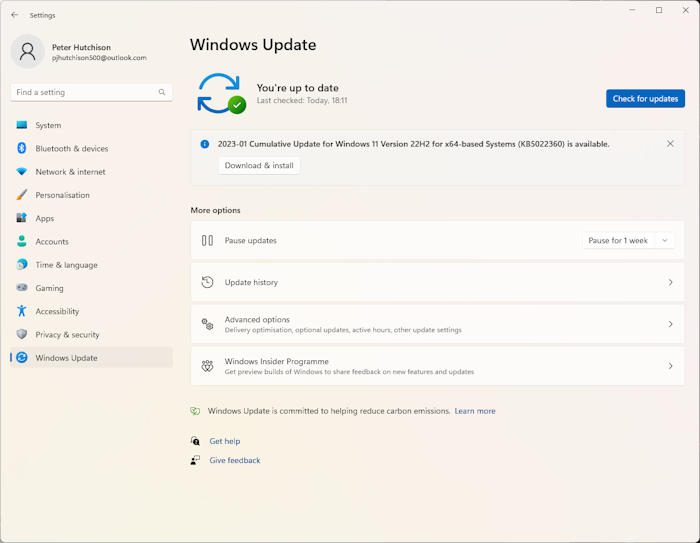
 |
Windows Guide |
Windows is a complex operating system and over time bugs and flaws can be found in the original code. So, Microsoft, releases updates from their web services to allow users to download and apply them to their computer to fix these bugs and flaws and in some cases can install new features or new programs as well to improve Windows.
1. Open the Settings.
2. Select Security and Updates.
3. Select Windows Update and then Change Settings.

4. Here you can specify how updates are applied to your computer.
a) Check for updates. Looks on Microsoft Updates site for any new updates.
b) Pause updates. Do not install updates immediately but wait 7 days before installing.
c) Update history. List any updates recently installed, you can also uninstall updates from here.
d) Advanced options. Other advanced options
i) Receive updates for other Microsoft products such as Microsoft Office and other products.
ii) Get me up to date. Restart as soon as possible to apply updates.
iii)
Download updates over metered connections.
iv) Notify me when a restart is required to finish updating.
v) Active hourse. Specify when not to restart the computer between given hours e.g office hours.
e) Optional options.
i) Optional updates. Include feature, quality and drivers updates.
ii) Delivery optimisation. Set bandwidth limits for updates.
iii) Recovery. Reset PC, advanced startup settings, go back to previous install.
iv) Restart apps.
v) Configured update policies.
1. If you wish to check and download updates manually, you can do this through the Window Update control panel.
2. Click on Check for updates and it will check which updates apply to
your system and will display any available updates.
3. There are three types of updates: Cumulative, Security and other feature or product pdates.
The Cumulative and Security updates are the most vital and should be installed as soon
as they appear (if they apply to your system).
4. You can then select the updates you requires and click Install to download
and install them to your computer. By default the original download is deleted
after the update is applied.
5. Once an update is applied, an entry is added the to the update history.Click on View update history to see what updates are installed.
1. If an update is causing problems on you system, you can uninstall updates.
2. Open Control Panel, Programs, Programs and Features.
3. Click on the
View installed updates link on the top left.
4. Select the update from the list and click on Uninstall.
By default, the 'Automatic Updates' service will find and download updates for you. If you cannot wait then there are a number of commands and scripts you can use:
a) Run Wuauclt /detectnow to force Windows to look for any new updates from Microsoft or Windows Server Update Service (WSUS) server.
b) Download updates from Microsoft Update Catalog web page.
c) Run the cscript WUA_SearchDownloadInstall.vbs script to find and install any new updates.
d) You can download and install using the WSUSOffline tool which has a useful GUI to download/install updates and create ISOs so that it can be used on multiple machines.
e) Run PowerShell cmdlets using the WindowsUpdateProvider and PSWindowsUpdate modules.
If you want to prevent one or more specific updates, then you need to install a seperate tool to hide or block incoming updates.